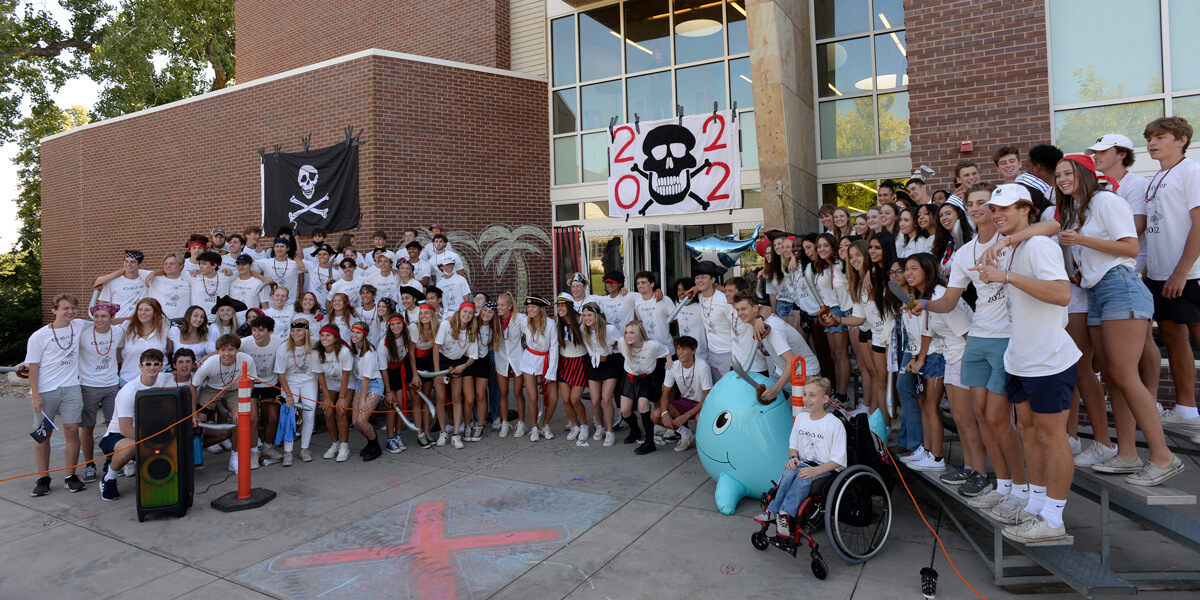Last week we wrapped up Homecoming festivities here at Colorado Academy, a week punctuated by athletic competitions, alumni returning to campus, and a raucous pep rally, where all three divisions gathered on the baseball field to play games and cheer each other on. For the Upper School, the final event of that week was the Homecoming Dance, which we held outside, under open skies, as a mitigation effort to prevent the potential spread of COVID-19.
The theme was “neon,” and the enthusiasm was unusually high—it’s been two years since we’ve held a homecoming dance. If someone were to search satellite photos of Lakewood on last Friday night, I wouldn’t be surprised if the Colorado Academy campus glimmered from all the glow sticks. There were plenty of other neon-related items that students brought along, too, including neon paint, clothing, glasses, and shoes.
What made this dance truly different
As I’m sure you know, themed high school dances are not uncommon.
Those of us who work at schools are used to clever themes and the fun accessories they inspire. But what was unique about this homecoming dance—and something worth writing about—is what happened in the closing moments of the dance, when the members of the Community Council who organized the dance began gently cleaning up at the perimeter of the dance floor.
The clean-up that the Community Council needed to do was pretty standard, but hefty nonetheless—picking up stray water bottles, stacking chairs, and collecting neon decorations. Seeing that their Community Council classmates were starting to clean up, a group of other students actually stopped dancing and began to help. A few other students noticed what was going on, and as the dance ended, an even larger impromptu group of students volunteered to join the clean-up efforts.
The truism of many hands makes light work kicked in. The dance clean-up went surprisingly fast. The number of students who had no responsibility for the clean-up, but cleaned up anyway, is a testament to our students and the care they show for one another.
Saying ‘thank you’
The Community Council was so grateful for the extra help, that the following Monday, during our next all-school meeting, our co-presidents Sofia Skipwith and Jack Younger took a moment to read aloud the names of the students who helped out, to thank them publicly. The moment was a wonderful complement to a speech Dr. Davis had given just moments earlier, where he reminded students of our community values and urged them to bring their best selves to CA, every day.
At the Upper School, it’s this sense of a student’s “best self” that we try to celebrate and encourage. And while we offer plenty of intentional programming to reach this goal, it’s heartening when we see the students reach for it on their own, especially when it’s to offer a kindness to each other.
